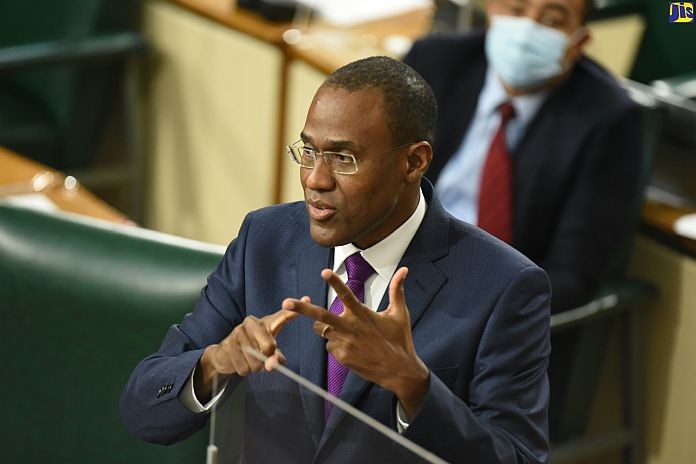KINGSTON, Jamaica, (JIS) – Jamaica’s debt-to-gross domestic product (GDP) ratio is projected to recover to 96 percent by March 2022, as the economy continues its strong rebound from the coronavirus (COVID-19) pandemic reports, Rochelle Williams; meanwhile minister of finance and the public service, Dr Nigel Clarke credits the economic rebound to prudent fiscal management as reported by Twila Wheelan.
Debt-to-GDP ratio
The debt-to-GDP ratio was 94 percent at the onset of COVID-19 in March 2020, but due to the pandemic and the measures implemented to slow its spread, the ratio increased to approximately 110 percent by March 2021.
“For Jamaica, given our vulnerabilities, this was a high and risky level of debt,” said minister of finance and the public service, Dr Nigel Clarke, while opening the 2022/23 budget debate on Tuesday, March 8 in the House of Representatives.
“Well, a year later, I am pleased to report that along with strong GDP growth and strong jobs growth, we have also significantly reduced our debt-to-GDP ratio,” noting that, barring any major surprises, by the end of the upcoming fiscal year, the ratio should be below 90 percent for the first time in 23 years.
Dr Clarke said that jobs recovered at a rapid pace during 2021/22, with 100,000 added between July 2020 and July 2021, and 75,000 between October 2020 and October 2021. Significantly, the unemployment rate in October 2021 fell to 7.1 percent, the lowest level in Jamaica’s history.
The finance minister noted that Jamaica is ranked second, among 30 countries in the Latin America and Caribbean region in restoring the national debt level to almost pre-COVID-19 levels by 2021.
He said that most countries in the region have debt-to-GDP ratios that are up to 60 percentage points higher than their pre-COVID-19 levels.
“This is Jamaica’s achievement … and this achievement lowers the risk of the Jamaican economy and provides better protection for turbulence,” he pointed out. The debt-to-GDP ratio compares what the country owes to what it produces annually.
Government debt as a percentage of GDP is used by investors to measure a country’s ability to make future payments on its debt, thus impacting borrowing costs and government bond yields.
Economic rebound due to prudent fiscal management
Meanwhile, minister Clarke is crediting Jamaica’s economic recovery from the coronavirus (COVID-19) to the prudent fiscal measures implemented by the government, reports Twila Wheelan.
The minister, who was opening the 2022/23 budget said that the buffers put in place prior to the pandemic, including the strategic decision to increase cash cushions through privatisations, reintegration of public bodies, and targeted fiscal overperformance enabled a strong rebound.
He said that the government took the decision to increase non-borrowed reserves by US$1 billion since 2016, through exchange rate flexibility and inflation targeting, and put away disaster funds in 2018 and 2019 that were drawn down in the first few months of the pandemic.
Other strategic decisions taken, he noted, included abolishment of distortionary transaction taxes and capitalisation of the central bank with $20 billion in 2018 and 2019, which allowed it to make unprecedented liquidity injections into the banking system.
Dr Clarke said that the government made sustainable and internally consistent policy choices during the crisis and maintained discipline in rejecting proposals that fell outside of that criterion.
“As a result, our economic recovery in Jamaica has been faster and stronger than the vast majority of our peers in the Caribbean, quite a few of whom had the unfortunate experience of the second year of economic decline in 2021,” he pointed out.
Tourism was a key driver in the recovery process, recording growth at more than 300 percent in the second quarter of 2021, over 100 percent in the third quarter, and greater than 75 percent in the fourth quarter.
The construction industry also experienced consistent growth throughout the period. Dr Clarke noted that except for mining, all sectors of the economy recovered strongly and showed growth for the last three quarters of 2021/22, enabling the country to stage a strong and robust recovery and weather the shock delivered by the pandemic.
The economy experienced 14 percent growth in the first quarter of the fiscal year, which is the highest quarterly growth rate ever recorded in Jamaica.
Growth was 5.8 percent for the second quarter and the economy is projected to expand by six per cent in the third quarter, and seven to nine percent for the fiscal year.





